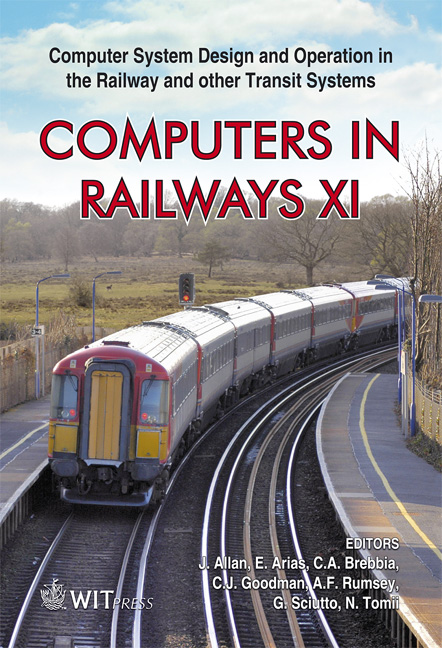Improvement Of A Railway Planning Tool Using Genetic Algorithms
Price
Free (open access)
Transaction
Volume
103
Pages
10
Page Range
505 - 514
Published
2008
Size
1,101 kb
Paper DOI
10.2495/CR080491
Copyright
WIT Press
Author(s)
J. de D. Sanz Bobi, J. Gómez Ramírez, J. Garzón Núñez & R. Galán López
Abstract
In this paper a new approach to a traffic planning process is presented. A new railway line planning tool is being developed inside a more complex system that encloses simulation and train control tools as well. Genetic Algorithms (GAs) are used in this tool in order to lessen the time perturbations obtained by a previous algorithm when a number of train units are retired from the line to increase the time interval between circulations. The way these units are removed from the line is mainly affected by two factors: the number of available retiring points in the line and how fast this interval between train units is increased. In the case that the interval between trains is reduced, no major problem is presented as adding train units to the line quickly decreases the interval between circulations. On the contrary, during the interval when trains can be retired as the increasing of time passing between trains in the stations, significant perturbation in the schedule of trains are produced and as is shown in the paper, GAs are able to handle the problem in a more efficient way than linear programming models or heuristic algorithms. Keywords: railway planning, decision making, evolutionary techniques, Genetic Algorithms. 1 Introduction A traditional railway service is based on regular timetables which are modelled as satisfaction constraint problems. Algorithms, implemented as constraint-based local search, aims to solve problems of realistic size can be found in [3–5].
Keywords
railway planning, decision making, evolutionary techniques, Genetic Algorithms.





